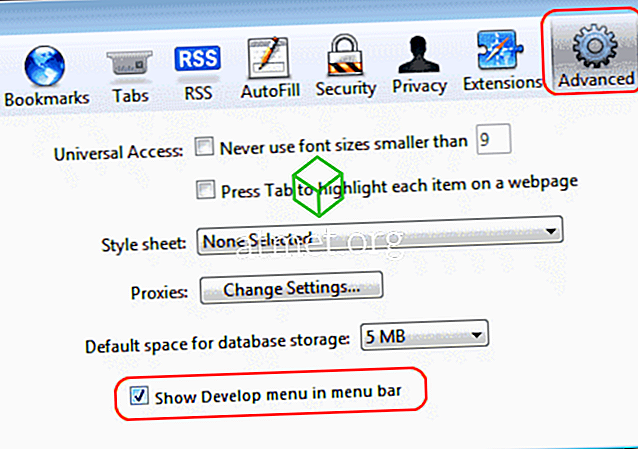- Rss Menu Extension For Safari Download
- Rss Extension Edge
- Safari Rss Feed
- Rss Menu Extension For Safari Chrome
Motivation
Browser extensions have reached a certain momentum, hence Google announced a more strict review process and to remove extensions from the store by August 27th, 2020 which don’t comply to these new rules.

To open in Google Reader, RSS Menu Extension for Safari notes says: – Can open feeds either online in Google Reader or in your native news reader app (Vienna, Reeder, NetNewsWire etc.) I haven’t tried it or Daniel’s extension. Users on macOS High Sierra or later can easily find extensions on the Mac App Store by choosing Safari Extensions from the Safari menu. If you distribute legacy extensions built with Safari Extension Builder, we recommend converting them to the new Safari App Extension format, test on the latest version of Safari 13, and submit them to the Mac. AccuWeather has local and international weather forecasts from the most accurate weather forecasting technology featuring up to the minute weather reports.
With an extensions based on the Mozilla WebExtension API, you can target all Chromium based browsers such as Chrome, Opera and Edge as well as FireFox. To also target Safari users, you require a dedicate implementation: a Safari App Extension. If you have not yet working in the Apple developer ecosystem, this is kind of a tough step, as there are multiple hurdles to take:
You need
- a Mac and XCode for development, as the App which you have to ship is compiled code, which will be distributed via the Apple App Store.
- a Developer Certificate for signing your code (comes for 99 EUR).
- to rewrite part of your existing extensions, if you not solely relying on content scripts.
To get some basic insights, I recommend working through these two tutorials before you start with your own Safari App Extension:
- Apple: Add, build, and enable a Safari App Extension
- Ulrik Lyngs: How to Build Safari App Extensions
Differences between Mozilla and Safari Architecture for Extensions
In a browser extension based on the Mozilla API there are different components, which you might need to port to Apple’s platform.

- Content Script: The content script(s) can be used almost unchanged. Safari also support these modules. But it wouldn’t be Apple if there is no difference to the standard. So there is no chrome or browser Object, but safari, which is slightly different.
- Background Script: The bad news is, you have to completely rewrite this functionality in Swift (or ObjC), as this functionality needs to be part of the native component. The good thing is, native code is fast, easy to test and Swift has very good support thru XCode. The background script will be replaced by the Extensions Handler.
- Popup: Yes, you can have Popups in Safari, if the App Icon in the toolbar of the browser is pressed, but it also requires a native implementation. (with a Storyboard). The correct term in Apple’s world is popover.
- Options Page: No, not supported. This functionality require you to implement this in a separate module as part of your native macOS application. (incl. Storyboards)
Rss Menu Extension For Safari Download
My Learnings
Common Code Base
Try to keep the codebase between Chrome and Safari as similar as possible for the content scripts. Refactor your existing content script, to have the browser specific functionality in separate classes/files. This is mainly related to the communication between the Content Script and the Extensions Handler (which is not present in Safari).
In order to figure out, whether your content script is running on safari or in a chrome environment you can use:
TypeScript Support
If you are working with TypeScript there is a type definition given for the safari Object. Unfortunately it does not contain the method signatures for safari.extension.* (but at least safari is now recognized).
Dealing with the Extension Handler
If your content script is sending a message to extension handler, the message will trigger the method messageReceived where you can process the data. For each message there will be a new instance of the extension handler, so you cannot share information between the extension handlers unless you make your variables static.
Project Targets
The project for a Safari App Extensions contains at least two targets:
- The native macOS application which is the container for distribution.
- The Safari App Extension which will integrate with the Browser.
Do not remove one or the other. Your App Extensions will neither run nor will it pass Apple’s review process.
Clean up generate code for native macOS App
If you are focusing on the Safari App Extension, the native macOS application will have almost no functionality. Still you might want to have a look at the application, as it is in the user’s application folder and of course it is part of the review process.
- Remove unused Menu Items (the auto generated view has a “Help” menu, without content)
- In the macOS app is a link to open the App Extensions tab in Safari. Make sure it works. (might be broken, if you refactor your application naming).
- Stick to the interface Guide Lines (the auto generated view does not have a title bar).
Remove headers from images, else the build breaks
You can use Vector graphics (PDF) or bitmaps (PNG) as toolbar icons. If you add images you have to remove the header for previews in Finder using xattr -cr on the command line. Else you will end up with Command CodeSign failed with a nonzero exit code.
/article-new/2020/11/sur-tip-41.jpg)
Side note: Toolbar icons have only one color and a transparent background.
Creating a Popover
To create a popover four steps are required.
- In Info.plist, in the subtree SFSafariToolbarItem change the “Action” from “Command” to “Popover”.
- In the build target for the extension, in “General” select the XIB File for the Main Interface.
- You require an according implementation of the Controller; but there is a standard implementation as part of the generated XCode Project.
- In the Extensions Handler overwrite the popoverViewController method:
AppStore Review
A short view with english audio explanations will help the reviews to better understand the functionality of your extensions. You can simply upload it to AppStore Connect. Screenshots of the Extensions must be made with Safari.
Safari User Guide
You can install Safari extensions to customize the way your browser works. For example, extensions can help you display social media and news buttons, block content on websites, give you access to features from other apps, and more.
Rss Extension Edge
Tip: The Mac App Store is the safest and easiest way to discover and install extensions. The extensions are reviewed by Apple, and they update automatically when Automatic Updates is selected in App Store preferences.
Get Safari extensions
In the Safari app on your Mac, choose Safari > Safari Extensions, then browse the available extensions.
When you find one you want, click the button that shows Get or the price, then click the button again to install or buy the extension.
Safari Rss Feed
Manage your extensions
In the Safari app on your Mac, choose Safari > Preferences, then click Extensions.
Do any of the following:
Turn an extension on or off: Select or deselect the extension’s checkbox.
Note: You get a warning if you turn on an extension that slows down browsing.
Change an extension’s settings: Select the extension, then select or deselect settings.
Remove an extension: Select the extension, then click Uninstall. Or, delete the app that contains the extension.
Restrict an extension
In the Safari app on your Mac, click the extension’s button in the toolbar.
Choose how much access the extension has.
Extensions may access the content of the webpages you visit. Check which extensions you have installed and make sure you’re familiar with what they do. See Change Extensions preferences in Safari.

Installing or uninstalling extensions, and turning them on or off, may take effect immediately or after you go to a new webpage or refresh the current page.
Important: The first time you open Safari, you get warnings about extensions that slow down browsing or are no longer supported:
Rss Menu Extension For Safari Chrome
Extensions that slow down browsing: The extensions will be turned off. You can turn on the extensions in Safari preferences.
Developer-signed .safariextz-style (legacy) extensions: The extensions won’t load and no longer appear in Safari preferences. You can’t turn them on.
